Anna Kirsanova
Year of Birth: 1992
Where do you live: Since 2014, I’ve lived in the Czech Republic
Your education: University of Architecture and Civil Engineering in Samara, Russia (2014) with a Bachelor of Architecture; Master of Architecture from the Faculty of Architecture at the Czech Technical University in Brno (2017)
Describe your art in three words: Contemplation, imperfection, spontaneity
Your discipline: Architecture / Graphic
Instagram
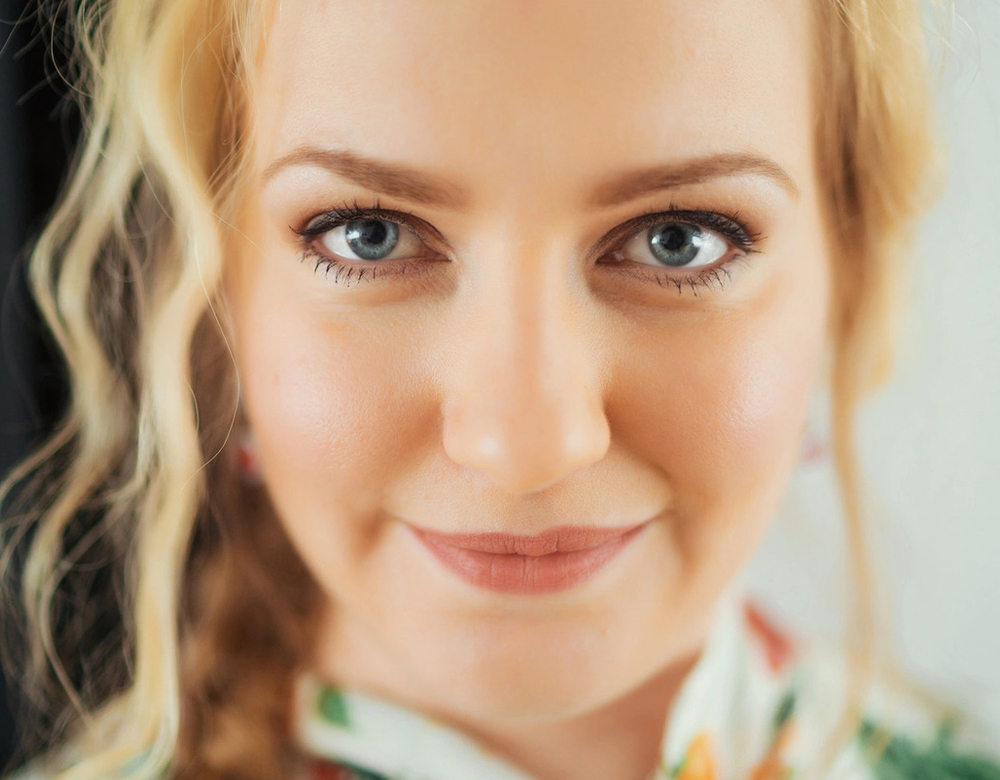
What inspired you to explore traditional Chinese painting techniques in your work, and how did your trip to China influence your artistic practice?
During our trip through China, I saw a picture in an old traditional Chinese hotel. At first glance, it seemed careless and almost shapeless. It wasn’t beautiful, and I wondered why it was displayed there. But later, I noticed the energy in this piece. It made me focus on it attentively. The expressive strokes breathed life into the artwork. I was shocked. To this day, I still see this artwork when I close my eyes. It was a revelation for me because my education had been grounded in classical European culture, and I didn’t expect someone to be so honest and brave to depict imperfection in such a lively way. I started looking into Chinese art. Though I had never been particularly fond of China, I began to admire the harmony in their culture—fine art, music, and calligraphy are organically interconnected. The strokes reflect the flowing character of their music. This music continues to play a vital role in my practice. I always listen to Chinese folk music while painting, as its slow yet sudden transitions mirror the rhythmic flow of ink. The interplay of movement and stillness in the music enhances my ability to capture the energy of my subjects, making sound an essential element of my creative process. While deeply influenced by Chinese painting, I do not aim to replicate it. Instead, I embrace its bold spirit—its sense of fearless exploration and willingness to accept imperfection. In my work, I strive to celebrate the idea that beauty lies in flaws and that true artistic freedom comes from focusing on essence rather than strict representation. I have cultivated a style that prioritizes expressive lines and the essence of the subject.
Your art emphasizes subtle movements and fluidity in nature. How do you decide when a plant or natural element is ready to be depicted in your work?
I usually take photos while walking in nature; it’s my favorite way to relax. I try to find interesting scenes, but it often requires some luck. More often, I capture characteristic views of plants and then create the composition myself. I need the photos to see the anatomy of the plant as my aim is to be precise. I want the viewer to recognize the species of the plant in my artwork. Of course, there’s strong simplification, but the most characteristic parts are still present. The biggest and most interesting part of my efforts is figuring out how to depict a particular plant. It’s always a challenge. I have to invent a technique if I want to depict a plant I’ve never drawn before. Different forms can’t be embodied using the same graphics. Just as the thorn and the burdock are different, so is the approach to their representation. That’s how calm and meditative graphics can still be interesting and lively. At first, I was surprised by how nature isn’t afraid to have long, straight lines, “boring” empty stems, or broken leaves. It doesn’t need excessive drama to be attractive. Neither do I.
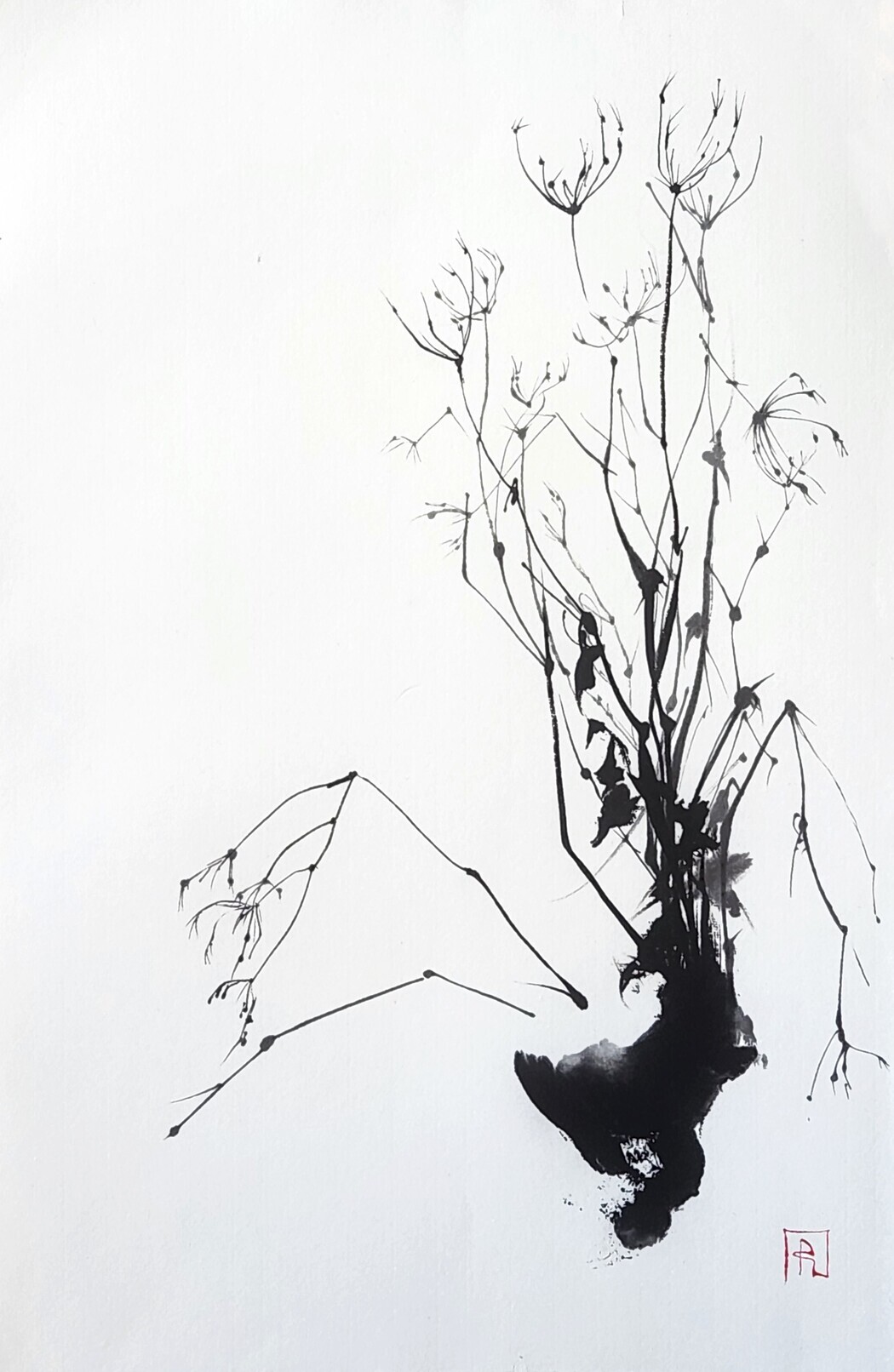 Anna Kirsanova | Continuousness | 2023
Anna Kirsanova | Continuousness | 2023
Your work focuses on the simplicity of nature. Can you share more about how you balance simplicity with complexity in your compositions?
This is the most important and most difficult part of my work. It’s a miracle to me when I achieve it. Drawing with ink is a very quick process. Usually, it takes only a few minutes to create a whole picture. But there’s no room for error. There’s a lot of preparation before I even pick up the brush. I find a piece of a plant that inspires me, and I try to imagine how I want to draw it. I love the challenge, and sometimes it takes weeks. I try to extract the most specific features and movements of the plant. What’s it like? What makes this stem so coarse or, on the other hand, so tender? What is its expression? Finally, I start painting. My first attempts are usually very messy, with an excess of unnecessary details. I make a lot of attempts to find the right balance between composition and simplicity. A big part of my focus is on the white space of the paper. It’s a powerful tool that plays a huge role in balancing simplicity with composition. It strengthens contrast and allows the lines to resonate fully.
It’s curious, but pure simplicity is the most difficult thing for me.
You use transparent tones and a black-and-white palette in your art. What role do you think color plays in your creative process, and why do you choose to work with monochrome?
This is an interesting question. As an architect, I love colors themselves. I can recognize a lot of tones, and I always get excited when I see them. But this skill sometimes works against me. When I tried drawing with color, I was always confused—so many colors! I lost the essence of my subject. Monochrome helps me focus on composition and gives me an extra challenge. A lot of things can be expressed with just black and white. This palette can strengthen effects like lightness, tenderness, or rigidity by itself. You can never achieve this with color. And of course, as an architect, I can’t ignore context. A monochrome picture always looks good in any interior—it’s timeless.
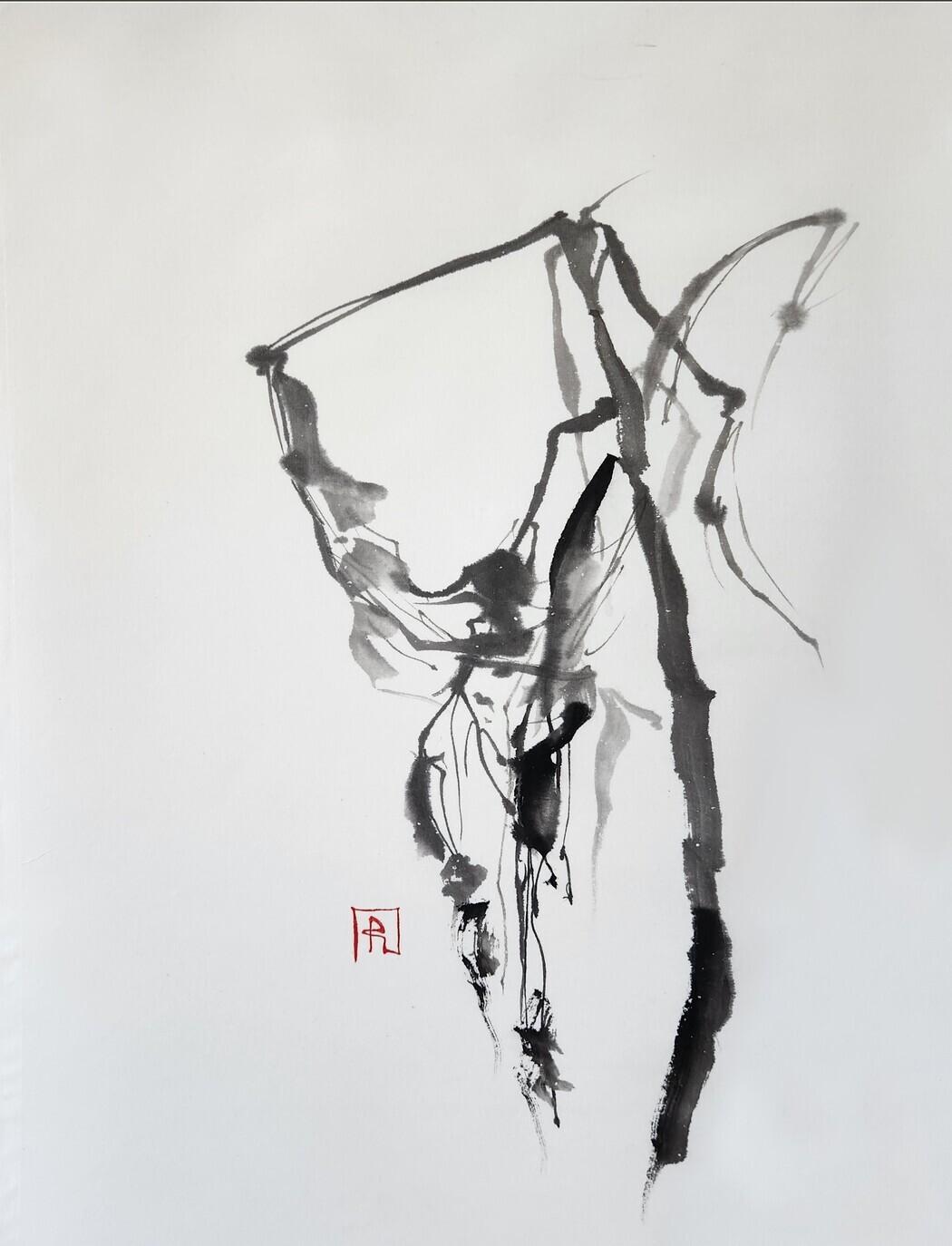 Anna Kirsanova | Trace of autumn | 2023
Anna Kirsanova | Trace of autumn | 2023
In your project, you highlight the deformations of plants under external pressures. Could you talk more about how this concept relates to your own artistic journey or personal experiences?
The true treasure of Chinese art for me is its focus on nature rather than the human personality. I think Western culture is too centered on the individual. It worked well during the Renaissance, but now, we’re too immersed in social networks. We pay too much attention to ourselves and forget to contemplate. We connect every object to human existence. I can understand this; our existence is the most important thing for us. But this lifestyle accelerates our lives. We want to stop, relax, and just breathe out, but nothing helps us do that. Every day, we live hundreds of lives through books, films, articles, and news. But what if we forget to live our own life? Self-immersion requires a lot of effort, and I know this from personal experience. That’s why I want to show the pleasure of contemplation—just plants without any deeper meaning. I want the viewer to enjoy the play of lines and shapes and forget about symbols, messages, or manifestos. Forget about this race called Life. Because plants are usually the same in their cycles. They are out of time. Here, we can touch eternity.
I know the titles of my pieces are inspired by human feelings, but they’re just for recognition. Without them, there would be thousands of “Shadows of Winter.”
Your process involves intricate technical steps like stretching, gluing, and sealing the paper. Could you walk us through one of your works’ creation from start to finish?
The technique itself is breathtaking. It’s more complicated than just drawing on paper. First, I want to mention why I chose these materials. The cooperation between rice paper, ink, and the calligraphic brush is essential. They truly work together. Different types of paper allow for different techniques. For example, the sei technique requires raw paper, which is very absorbent. It helps create soft spots and transitions. Ripe paper, on the other hand, is used for calligraphy, which requires sharp lines. But all rice paper is very thin. After ink is applied, the paper waves, and you must stretch it. I use an original technique of gluing the picture. In short, the picture is glued onto another layer of rice paper, usually a ripe one. After gluing, the picture is stretched on a solid base, like a door or table. This process isn’t difficult, but it requires experience; otherwise, you risk ruining the picture. Naturally, because of this process, I use special ink that becomes water-resistant after drying.
What excites me most is the collaboration between the artist and the brush. The brush isn’t just a tool—it’s a personality. Chance plays a significant role, manifesting through the brush. The more skilled you are, the fewer unexpected results occur. But this space is fertile for creativity.
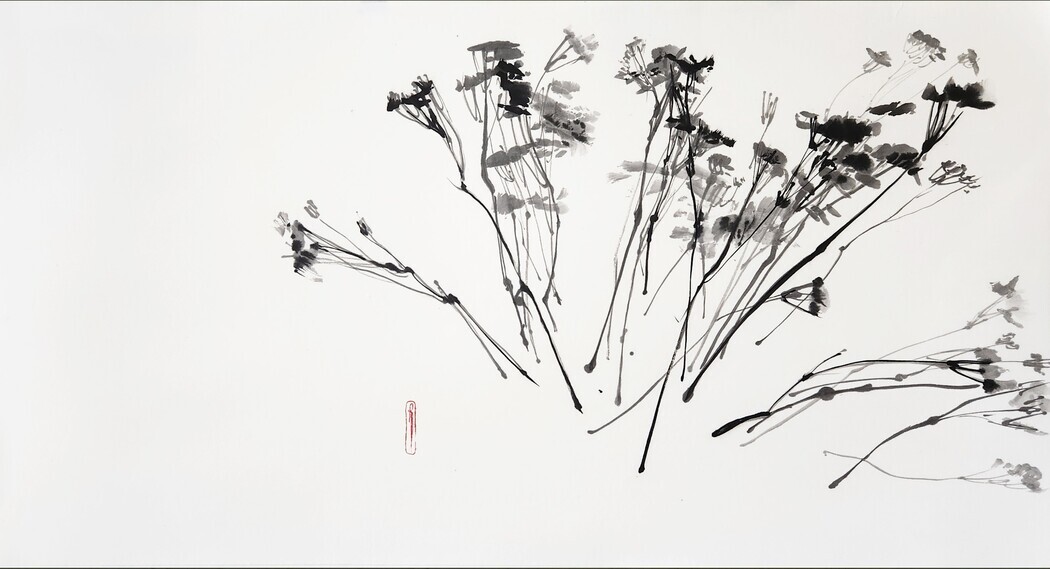 Anna Kirsanova | Hummock | 2024
Anna Kirsanova | Hummock | 2024
Although your work is deeply influenced by Chinese painting, you mention that you don’t aim to replicate it. What do you mean by embracing its ‘bold spirit,’ and how does that manifest in your pieces?
Yes, I want the viewer to see my own style and message in my artwork, not just another Chinese painting. I was simply inspired by the spirit of this art. The most exciting aspect of Chinese art is the bold vision of the Chinese masters. It embodies an unrelenting sense of exploration, a willingness to embrace the unknown, and a refusal to succumb to the fear of imperfection. This approach celebrates imperfections in nature, highlighting the idea that perfection can be found in imperfection. For me, as an artist, this means true freedom in painting. In practice, it’s a meditative state. At that point, nothing is important; you just enjoy moving the brush across the paper. You may have an idea in your mind, but even that isn’t mandatory. Your mind and hand know what to do, and you just trust them, as well as the brush. Honestly, such a state is rare and valuable to me. I have to prepare for a long time to feel it. But when I do, I create some of my best work. In that moment, you can look at your piece and discover details you didn’t expect. I love those conditions, but they require hard work.
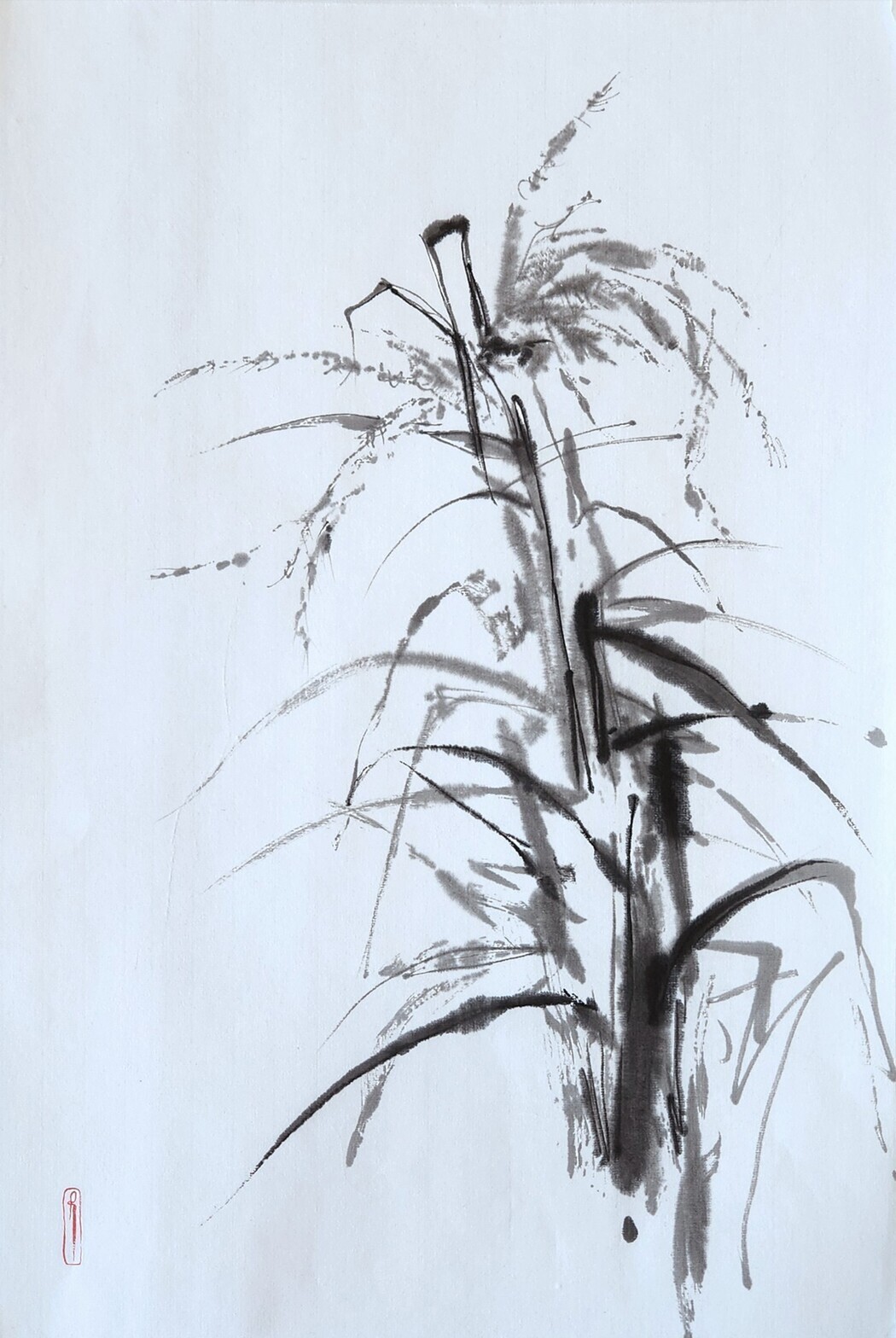 Anna Kirsanova | Sheaf | 2025
Anna Kirsanova | Sheaf | 2025

Leave a Reply